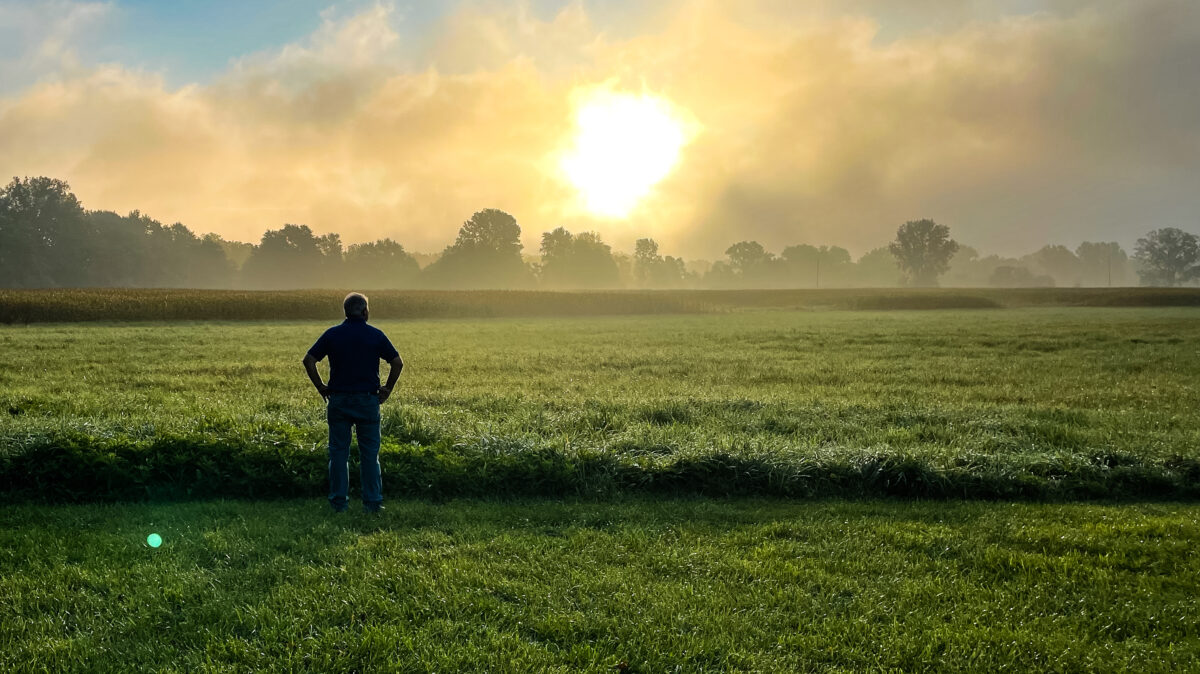Sustainability Grows on the American Farm
TOPICS
SustainabilityGuest Author
Special Contributor to FB.org

photo credit: AFBF Photo, Morgan Walker
Guest Author
Special Contributor to FB.org
By Kari Barbic
No matter your profession or background, we all have a shared interest in being good stewards of our natural resources and making more sustainable choices. While climate-smart trends and initiatives have increased in popularity in recent years, farmers and ranchers have been “going green” for decades, and for some even longer. What’s more, U.S. agriculture is a global leader in climate-smart practices that enrich the soil, protect our water, absorb carbon and reduce emissions. America’s farmers and ranchers have a great success story to share, and it’s a story that keeps getting better.
There is a real hunger not only for sustainably grown food, but also for direct farm-to-table stories. Americans have a high level of trust in farmers and ranchers, to the tune of 87% according to a recent American Farm Bureau public opinion poll. Our surveys have also found that the public ranks farmers high as a trusted resource among professionals for information related to food and climate. However, most misunderstandings about agriculture’s environmental impact come, not surprisingly, from a lack of information. When we share agriculture’s story broadly and farmers and ranchers share their stories specifically, we can move the needle together.
When it comes to conservation and sustainability, farmers and ranchers are literally the boots on the ground leading these efforts.
Farmers are rising to the challenge of feeding a growing population all while keeping their slice of emissions relatively small. Just 30 years ago, it would have taken 100 million more acres to produce the same amount of crops today’s farms are yielding. U.S. agriculture now makes up just 10% of overall greenhouse gas emissions, much less than industries like transportation and electricity for example. That number gets more impressive when you take into account our booming population. If you look at agriculture emissions per capita over the last three decades, America’s farmers and ranchers have actually decreased their emissions on that scale by 15%.
How are farmers today producing more food, fuel and fiber without using more resources or leaving a larger environmental footprint? That success is thanks in large part to innovative practices and advanced technology. For example, farmers are planting cover crops to replenish the soil and cutting back on plowing to keep nutrients in the soil. From better seeds to smarter tractors, farmers are also eagerly adopting new tools to help them farm more efficiently. They are conserving water through modern irrigation systems and using less fertilizer and pesticides with precision tools that help them pinpoint application down to an individual plant’s needs.
And farmers aren’t just using less either, they are doing more to conserve land and resources and to use clean energy. Farmers and ranchers have nearly tripled renewable energy sources on the farm in recent years with solar panels, windmills, and methane digesters, to name a few. What’s more: farmers across the country have enrolled a total of 140 million acres in conservation programs—that’s a land mass equal to the size of California and New York combined.
When it comes to conservation and sustainability, farmers and ranchers are literally the boots on the ground leading these efforts. As any farmer knows, there’s no such thing as good enough on the farm. Every day and every season, farmers and ranchers are looking for ways to do better and help fulfill their mission to produce our nation’s food, fiber, and fuel. This spirit has driven American agriculture to grow sustainably together, and this same spirit will drive this story of growth forward for generations to come.
Kari Barbic is a director of communications for the American Farm Bureau Federation. She grew up around agriculture in California’s Central Valley and now resides in Washington, D.C.
Trending Topics
VIEW ALL